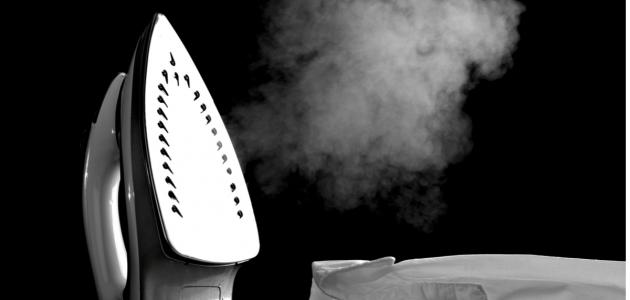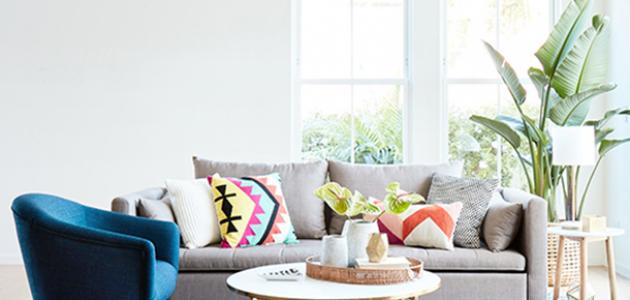Parquet flooring
Parquet is defined as a group of wooden pieces with various shapes and patterns, which are stacked side by side and fastened using adhesives, staples, or metal nails to form a homogeneous wooden surface that covers different floor areas such as living rooms, kitchens, bedrooms, offices, etc. The parquet consists of a grid made of Paper, plastic, or cloth fastened with metal or plastic wires to various natural woods. Perhaps the most widely used type is oak due to its hardness. Parquet is also manufactured from walnut and maple wood. The parquet comes in different, relatively small sizes ranging from 22.86 cm * 22.86 cm. And 30.48 cm * 30.48 cm and 48.26 cm * 48.26 cm, with a height ranging from 0.79375 cm to 1.905 cm.
Parquet flooring defects
There are many disadvantages associated with using parquet flooring, including:
- High price: Parquet is expensive compared to other types of flooring.
- Vulnerable to damage: This is especially true for homes with children and animals that can scratch and damage the parquet surface.
- Transferring votes: Parquet does not have the ability to isolate sounds, as walking may be a source of noise for the owners of the lower apartment when the floor of the upper apartment is made of parquet, so it is necessary to put an insulator before laying the parquet, as there are many types of insulating materials available for wooden floors that are capable of absorbing sounds.
- Affected by weather factors: One of the most disadvantages of parquet is that it is greatly affected by different temperatures and humidity, as it expands and contracts according to weather factors. High humidity makes the parquet expand and become larger in size, while warm and dry temperatures affect the parquet and make it shrink to become smaller than its size.
- Food for termites: Parquet is a fertile and ideal feeding environment for termites, so it must be inspected periodically.
- Affected by detergents and water: Parquet is one of the materials that is greatly affected when it is exposed to cleaning chemicals and even water. Leaving water on the parquet for long periods or cleaning it with water repeatedly and excessively can cause it to seep under the parquet and cause major damage to it.
- Periodic maintenance: Parquet needs great attention, as it requires re-maintenance and polishing at least once every 3-4 years.
- Exposure to sunlight: Parquet may be damaged and fade when exposed to direct sunlight, so care must be taken to avoid this.
- Lack of polishing and shaping: There are imitation types of parquet, which cannot be shaped or polished properly.
- The need for a professional: Parquet installation requires a specialized technical team.
- Hard texture: Whoever steps on the parquet feels that the floor is hard and hard, and he may easily stumble when the floor is wet.
How to care for parquet floors
It is recommended to follow the following methods to keep the parquet clean and shiny:
Read also:Household electrical appliances- Clean the parquet using a vacuum cleaner to get rid of the dirt stuck in it, especially if it is a decorative type that contains dust and dirt.
- Wipe the parquet using a special dry mop for parquet floors.
- Wipe the parquet using a very small amount of water, and repeat the process until the parquet is completely dry.
- Repeat the previous three steps once every two weeks to keep the parquet clean.
- Cover the exposed parquet, which is exposed to great friction due to frequent walking, using a rug. An ideal idea is to place an outdoor rug to wipe shoes to keep the home’s parquet clean.
- Keep the nails of animals raised at home short and trim them constantly to prevent them from scratching the parquet.
- Clean the parquet as soon as it gets dirty, and avoid leaving stain removal for a later time to keep the parquet permanently clean.
- Use special cleaning products for wooden floors. You can also make a cheap, natural household cleaner by mixing a quarter cup of apple cider vinegar or half a cup of white vinegar with 3.7854 liters of lukewarm water, and several drops of any essential oil as desired to get rid of the vinegar smell, then use The resulting solution is used to safely clean the parquet.
Tips when installing parquet
It is recommended to follow the following tips when installing parquet:
- Clean the floor well and get rid of any stuck-on materials before installing the parquet.
- Check that the floor is completely dry before installing the parquet.
- The ground must be completely level before starting to install the parquet, so it is necessary to sand the uneven areas and fill the gaps with an amount of cement.
- It is recommended to place parquet pieces after measuring them with cardboard templates on the corners of the walls and the bottom of the wall.
- It is recommended to place a piece of wood when completing the installation of a certain area of parquet so that you can sit on it and complete the installation of the parquet.
- It is recommended to take future preventive measures for the expansion of the parquet by leaving a space between the edge of the parquet and the walls of 1.27 cm.
- Avoid walking on the parquet at least a day before it is installed, in order to ensure good stability.
- Experts recommend installing the parquet from left to right to ensure a stable floor.
- Make sure to read the instructions included with the parquet before starting to install it, in order to follow the precise and appropriate steps for installing the parquet according to the type that was chosen.
- Avoid installing broken pieces of parquet at the entrance and replace them with pieces of complete parquet.
- Make sure to frame the floor joints with pieces of parquet, such as heating pipes that run through the floor.
- Precision when installing parquet, as the appropriate location for placing the piece must be determined before gluing it with glue, lest this cause the loss of quantities of parquet pieces.
- It is recommended to install the parquet by tapping it several times in a gentle manner, to get rid of all the voids that are located underneath it during installation.
- It is recommended to choose the appropriate type of parquet, according to the budget and available space, taking into account the installation of dark-colored parquet in spaces where guests are received or those that are not used frequently, while it is preferable to install light-colored parquet in spaces that are permanently used.









